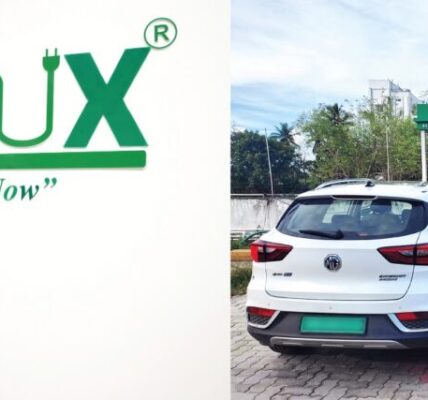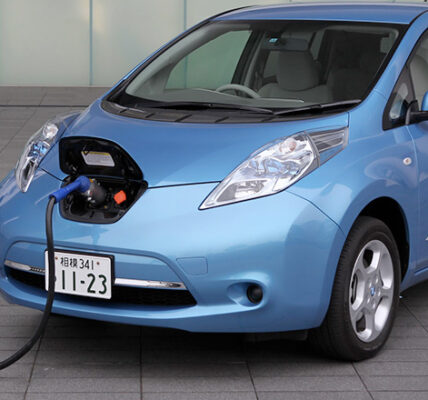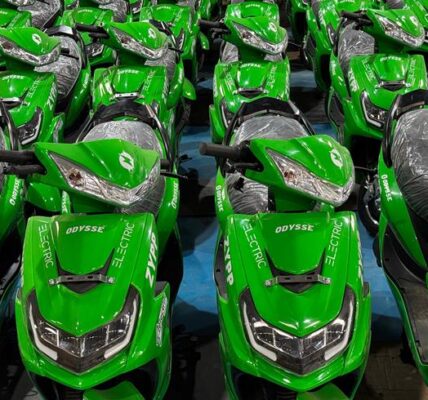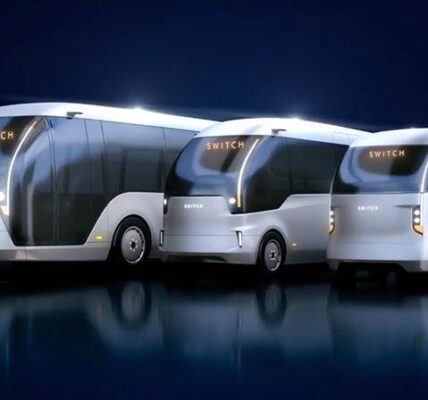India has witnessed a 218 per cent growth in sales of electric vehicles, or EVs, in the last fiscal year. However, high growth rates are typical for sunrise sectors, and EVs captured under 1 per cent of the total sales for FY 2021. While EV adoption climbs steadily in the country, more needs to be done to turbocharge the India growth story in this sector.
EVs represent a massive opportunity for various stakeholders. Especially for the large gig economy—characterized by short-term contracts and freelance work—EVs could bring employment opportunities that could foster the empowerment of those economically disadvantaged. For the Indian automobile industry, including notable EV start-ups such as Ather Energy, BluSmart, and Yulu, they present manufacturing and export opportunities. For the Indian government, which is soon taking over the G20 presidency, this represents an opportunity to deliver on ‘energy transition’—from fossil fuels to renewable energy—a key part of the new G20 agenda recently unveiled by Prime Minister Narendra Modi. If India grabs these opportunities aptly and makes good use of its G20 spotlight, it could lead the world in EV adoption.
EVs for the Indian gig economy
A recent policy brief by NITI Aayog estimates that the Indian gig economy will comprise 2.35 crore workers by 2030, up from just 77 lakh workers in 2020-21. Other estimates put up higher numbers. A significant fraction of informal markets relies on mobility. Hence, due to the sheer strength of numbers, the gig economy presents a big opportunity for EV adoption. For instance, delivery platforms like Zomato and Swiggy frequently face a scarcity of delivery agents who can travel at their own expense. On the other hand, many seek such informal employment at any given time. Affordable two-wheeler EVs present the opportunity to bridge such employment demand-supply mismatch.
Further, EV models that don’t need a license or registration to ride, such as Yulu scooters with a 25 km/hour speed limit, extend the market significantly. Of the Indian cities, Bengaluru emerges as a successful example. The city has 7,500 Yulu scooters, with 60 per cent riders being delivery agents. Adoption of EVs could benefit a wide range of workers with mobility needs carrying low payloads. Affordable EVs can empower disadvantaged sections across India and ensure their upward mobility on the social ladder. Additionally, the demand created by this section is a big opportunity for the Indian EV manufacturing sector.
EV manufacturing and export potential
The Indian EV market is estimated to be valued at $30 billion by 2027, up from $7 billion in 2021. NITI Aayog projects that by 2030, India’s EV sales penetration will be 80 per cent for two-wheelers and three-wheelers, 70 per cent for commercial vehicles, 30 per cent for private vehicles, and 40 per cent for buses. Such projections align with India’s sustainability goal of being carbon neutral by 2070. However, a recent analysis states that NITI Aayog’s EV sales projections may fall to 40 per cent by 2030, despite encouraging trends in the industry. Thus, the time is ripe for manufacturers to step up and tap all potential EV markets, especially those concerning the gig economy, as demand from the gig economy could significantly boost EV sales. Ninety-five per cent of the new vehicles registered in FY 2021 were two-wheelers and three-wheelers—a reflection of the strong demand pool for EVs. Further, establishing capabilities on the domestic front could significantly open global markets for India
Various market players have augmented India’s EV potential, not only domestically but for exports as well. Following its partnership with Bajaj Auto in 2019, Yulu has made strides with product design, manufacturing, and engineering processes. Its expertise in EVs, combined with Bajaj’s two-wheeler export strength, could help India’s EV exports. Further, Yulu’s partnership with city authorities in Delhi, Mumbai and Bengaluru promises to bolster its parking and charging infrastructure. Similarly, India’s largest two-wheeler maker Hero MotoCorp recently launched Vida V1, its first electric scooter, and aims to enter international markets early next year. These companies are enabling India’s EV export prowess, helping the country tap into relevant markets, such as Latin America and Southeast Asia. But India will need seamless and robust enabling policies to achieve its full potential in EV manufacturing.
Fine-tuning EV policies
The government’s central EV adoption policy push is reflected in the 2019 FAME (Faster Adoption and Manufacturing of Electric and Hybrid Vehicles in India) Scheme Phase-II, which has a budget outlay of Rs 10,000 crore through 2022. The production-linked incentive (PLI) schemes for advanced automotive technology (ATT) products and advanced chemistry cells (ACC) intend to drive EV adoption beyond FAME-II—which provides subsidies for the purchase of new electric vehicles.
Domestic value addition (DVA)-based subsidies are a key feature of FAME-II. However, recently, smaller EV start-ups have alleged differential treatment by the government due to non-payment of FAME-II subsidies. With subsidies up to Rs 50,000 for two-wheeler EVs and up to Rs 1 lakh for three-wheeler EVs, non-payment of subsidies may affect market sentiment. Citing the genesis of such concerns in DVA calculation, the government is modifying FAME-II by digitising the DVA data. However, subsidies under FAME-II need further rethinking. Instead of subsidies for individual EV units, subsidies for mass production will bode well for the EV market. Additionally, subsidies provided must be delinked for EVs, say electric scooters and the batteries they carry.
The ironing out of policy hiccups has gained traction in some cases. The GST Council may soon rationalise the tax on lithium-ion batteries and EVs by lowering the 18 per cent GST on batteries to 5 per cent, which is also the rate charged for EVs. On the EV component front, a new PLI scheme is expected by December 2022, which will target advanced EV battery technologies that are not part of the ACC PLI scheme.
India must be mindful of the geopolitical implications of EV adoption. It must ensure that EVs are adopted without increasing the existing reliance on China for EV components. As India adopts EVs, it must also ensure that the requisite infrastructure, including charging points, is in place. It is fortuitous that the three emerging economies of Indonesia, India, and Brazil comprise the present G20 Troika. With diverse societies and a range of challenges, the success of EV adoption in such countries—especially India—could serve as inspiration for the world to battle the harsh effects of climate change.







